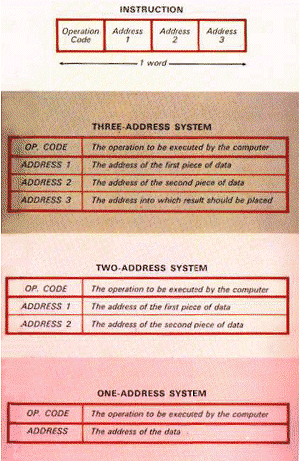
 |
'Words', 'Bits', and Addresses |
'Words', 'Bits', and Addresses |
|
 |
A computer word is an arrangement of binary digits, or bits, which have
a special meaning to the computer. The number of bits needed to form a single
character is called a byte. The number of bits in a word is known as the
word length and may be as many as fifty, although this figure will vary according
to the design of the computer.
The store of the central processor can contain several million words. Most computer systems have between 16 and 256 thousand words capacity, but this is constantly increasing. It is necessary to select a certain number of these words for use in a particular calculation. It is vitally important, therefore, that their exact positions are known, otherwise the calculation could not take place. The store is, in fact, divided up into compartments, or locations. Each location holds a word and its position is identified by a serial number known as the address. Computer words are of two types: instruction words which tell the computer what to do, and data words which represent the numbers the computer has to use in its calculations. An instruction word has itself got two parts: the first part is the operation code, or op. code, which describes in number form the operation to be performed. The second part contains one or more addresses of data words with which the computer is to carry out its arithmetic. The number of addresses required for a particular calculation may vary between one and three but is more usually one or two. The table opposite show how information may be contained ir instruction words for the different systems.
|
Reproduced from "How it Works" Ladybird Series